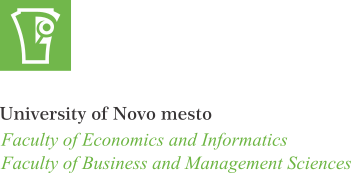The Impact of Migrations on Macroeconomic Competitiveness of the Republic of Serbia
Keywords:
migration, “brain drain”, competitiveness, strategyAbstract
Migrations are present in all countries in the world, both developed and developing. It can, either positively or negatively, affect the economic development of a national economy, especially its competitiveness. Accordingly, a special attention should be paid to the qualification structure of population and the ability of a country to create, retain and attract greater number of highly qualified workers. Unfortunately, a negligible number of countries
persist in this very important goal that directly reflects in their low competitiveness. This paper will be exploring a low level of macroeconomic competitiveness of the Republic of Serbia, which is primarily determined by negative migration flows in the country and a permanent “brain drain”. In the paper, there will be perceived an absence of strategic planning and inappropriate economic policy as key factors of such negative trend. Finally, the paper will give a set of recommendations how to stop negative demographic trends, and improve competitiveness in the future
References
Dayton-Johnson, J., Pfeiffer, A., Schuettler, K. and Schwinn, J. (2009). Migration and Employment. Promoting pro-poor growth: Employment. OECD. Retrieved on 1/13/2015 from the Internet: http://www.oecd.org/dac/povertyreduction/43280513.pdf.
Grečić, V. (2010). Srpska naučna dijaspora: tamo i ovde. Beograd: Institut za međunarodnu politiku i privredu.
Horvat, V. (2004). Brain Drain. Threat to Successful Transition in South East Europe?. Southeast European Politics, 5, No. 1, pp. 76–93.
Jackson, T. (2012). Migrants as knowledge carriers: International mobility and the highly skilled in Serbia. London: School of Slavonic and East European Studies, University College London.
Kupiszewski, M., Kicinger, A., Kupiszewska D. and Flinterman, F. H. (2009). Labor migration Patterns, Policies and Migration Propensity in the Western Balkans. Geneva: Central European Forum for Migration and Population Research, International Organization for Migration.
Kupiszewski, M., Kupiszewska, D. and Nikitović, V. (2012). Uticaj demografskih i migracionih tokova na Srbiju. Beograd: Međunarodna organizacija za migracije.
Leipziger, D. (2008). Brain Drain and the Global Mobility of High-Skilled Talent. The World Bank Prem Notes, 123, pp. 1–6, Washington: World Bank. Retrieved on 1/15/2015 from the Internet: http://www1.worldbank.org/prem/PREMNotes/premnote123.pdf.
Ministry of Finance of the Republic of Serbia. Retrieved from the Internet: http://www.mfin.gov.rs/?change_lang=sr.
Nacionalna služba za zapošljavanje Republika Srbija. Retrieved from the Internet: http://www.nsz.gov.rs.
Nikitović, V. (2013). Migraciona tranzicija u Srbiji: demografska perspektiva. Sociologija, 55, No. 2, pp. 187–208.
Schwab, K. (2014). The Global Competitiveness Report 2014/2015. Geneva: World Economic Forum. Retrieved on 1/20/2015 from the Internet: http://www3.weforum.org/docs/WEF_GlobalCompetitivenessReport_2014-15.pdf.
Serbian Government (2012). Migracioni profil Republike Srbije za 2011. godinu. Retrieved on 1/20/2015 from the Internet: http: www.srbija.gov.rs.
Serbian Government. (2013). Migracioni profil Republike Srbije za 2012. godinu. Retrieved on 1/20/2015 from the Internet: http: www.srbija.gov.rs.
Stark, O. and Fan, S. (2011). The Prospect of Migration, Sticky Wages and “Educated Unemployment”. Review of International Economics, 19, No. 2, pp. 277–287.
Statistical Office of the Republic of Serbia. (2014). Demografska statistika u Republici Srbiji, 2013. Retrieved on 1/20/2015 from the Internet: http://pod2.stat.gov.rs/ObjavljenePublikacije/G2014/pdf/G20144014.pdf.
Strategija regionalnog razvoja Republike Srbije 2007-2012. (2007). Beograd: Republički Zavod za razvoj. Retrieved on 1/17/2015 from the Internet: http://www.gs.gov.rs/lat/strategije-vs.html.
Todaro, M. and Smith, S. (2012). Economic Development. Boston: Pearson Education, 11th edition.
World Bank, World Bank Indicators: data.worldbank.org.
Downloads
Published
How to Cite
Issue
Section
License
Copyright (c) 2022 Journal of Economic and Business Sciences

This work is licensed under a Creative Commons Attribution 4.0 International License.




